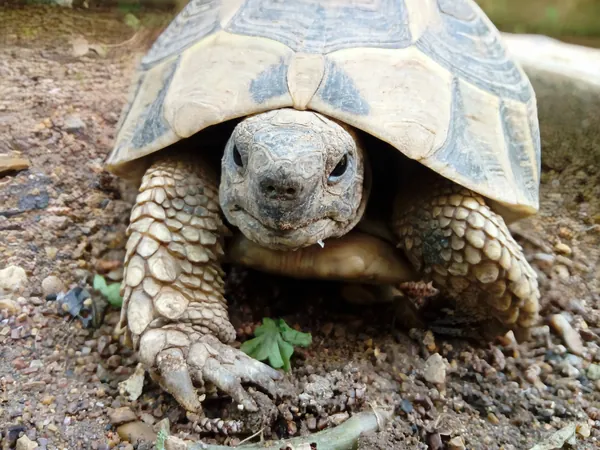
Unlocking the Secrets of Turtle Heads: A Clue to Dinosaur Evolution!
2025-06-15
Author: Amelia
The Surprising Complexity of Turtle Heads
At first glance, a turtle's head may appear simplistic, featuring just a hard beak and a quilt of scales. However, a closer inspection reveals an intriguing mystery: the scales on the crown of the skull do not align neatly with those on the cheeks. This discrepancy has sparked new research at the University of Geneva.
A Two-Pronged Approach to Scale Formation
Scientists have discovered that turtles employ two distinct methods to develop their head scales. Using a combination of genetic profiling, 3D microscopy, and advanced computer modeling, the research team found that the scales on the cheeks are formed through a genetic process, while those on the crown are created through mechanical folding.
Genetic Patterns Reveal Turtle Ancestry
For most vertebrates, scales and appendages grow from tiny patches called placodes, where certain genes activate in a highly organized manner. Turtles adhere to this genetic approach along their cheeks, with specific gene activities like β-catenin and sonic hedgehog guiding the process.
Mechanical Marvels: The Crown of the Turtle
Conversely, the turtle's crown scales arise from a process similar to that seen in crocodiles, where rapid growth of the skin causes it to buckle into folds against the underlying bone. This mechanical folding is akin to how the brain's surface folds during development.
Asymmetrical Designs: A Unique Turtle Trait
Researchers noted that even the left and right sides of a turtle's head rarely mirror each other, a characteristic resulting from spontaneous folding. Using simulations, they recreated the complex patterns seen in various tortoise species, such as the sulcata and marginated tortoises.
Patterns: The Balance Between Function and Aesthetics
While consistent scale configurations generally serve a protective function in reptiles, the irregular folds on a turtle's head appear to be remnants of growth dynamics rather than essential survival features. Their unpredictability raises intriguing questions about the evolution of aesthetics in nature.
Connecting Turtles to Dinosaurs
Interestingly, turtles and crocodiles share a close evolutionary relationship, suggesting that mechanical folding was a trait of their common ancestor from the Triassic period. This raises the possibility that dinosaurs also exhibited similar irregular scale patterns.
Broader Implications for Science and Engineering
Beyond evolutionary biology, this research opens new avenues in biomimetics, where engineers study natural mechanisms to create innovative designs in flexible electronics and responsive materials. The self-folding systems seen in turtle scales could inspire novel applications in architecture and regenerative medicine.
A New Perspective on Evolutionary Biology
As we delve into the fascinating world of turtle head scales, the insights gained are reshaping our understanding of soft-tissue textures in extinct species. This groundbreaking study, published in the journal iScience, underscores the incredible complexity of nature's designs.









 Brasil (PT)
Brasil (PT)
 Canada (EN)
Canada (EN)
 Chile (ES)
Chile (ES)
 Česko (CS)
Česko (CS)
 대한민국 (KO)
대한민국 (KO)
 España (ES)
España (ES)
 France (FR)
France (FR)
 Hong Kong (EN)
Hong Kong (EN)
 Italia (IT)
Italia (IT)
 日本 (JA)
日本 (JA)
 Magyarország (HU)
Magyarország (HU)
 Norge (NO)
Norge (NO)
 Polska (PL)
Polska (PL)
 Schweiz (DE)
Schweiz (DE)
 Singapore (EN)
Singapore (EN)
 Sverige (SV)
Sverige (SV)
 Suomi (FI)
Suomi (FI)
 Türkiye (TR)
Türkiye (TR)
 الإمارات العربية المتحدة (AR)
الإمارات العربية المتحدة (AR)